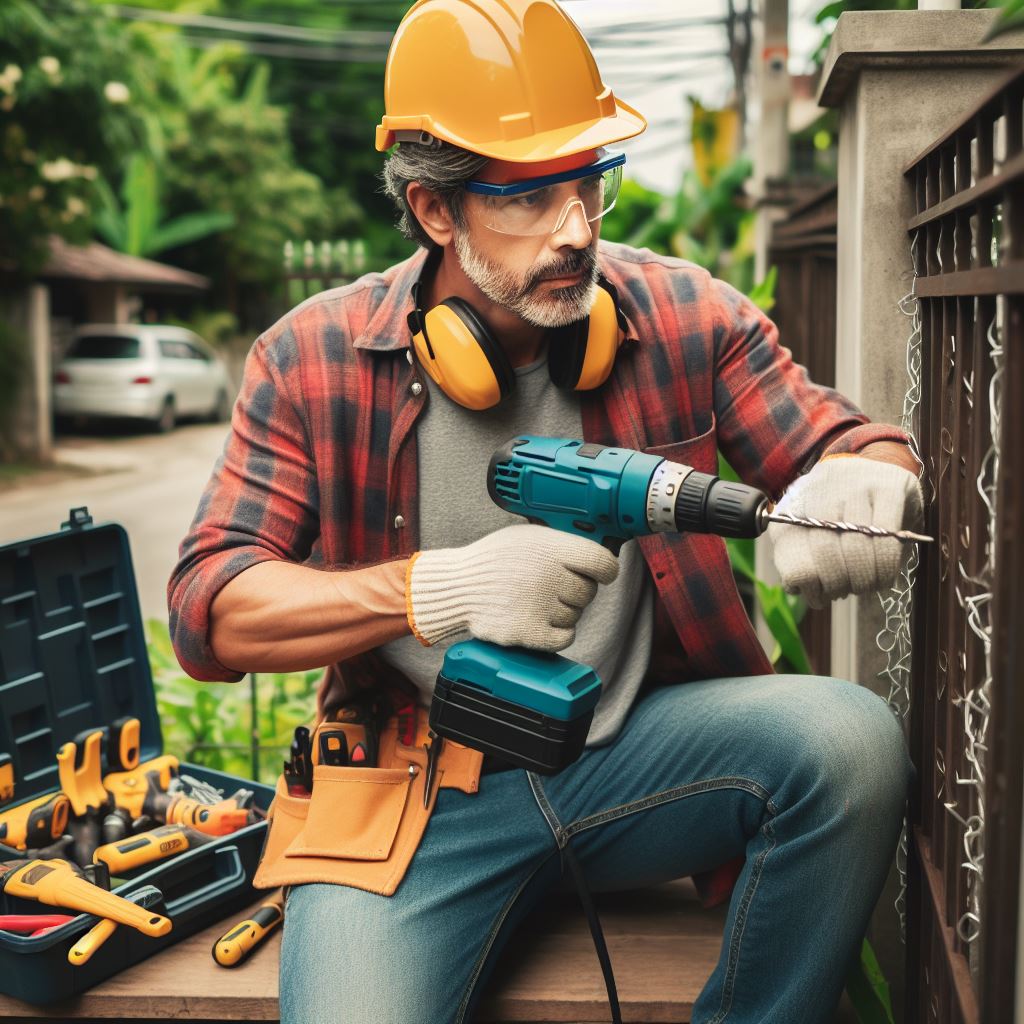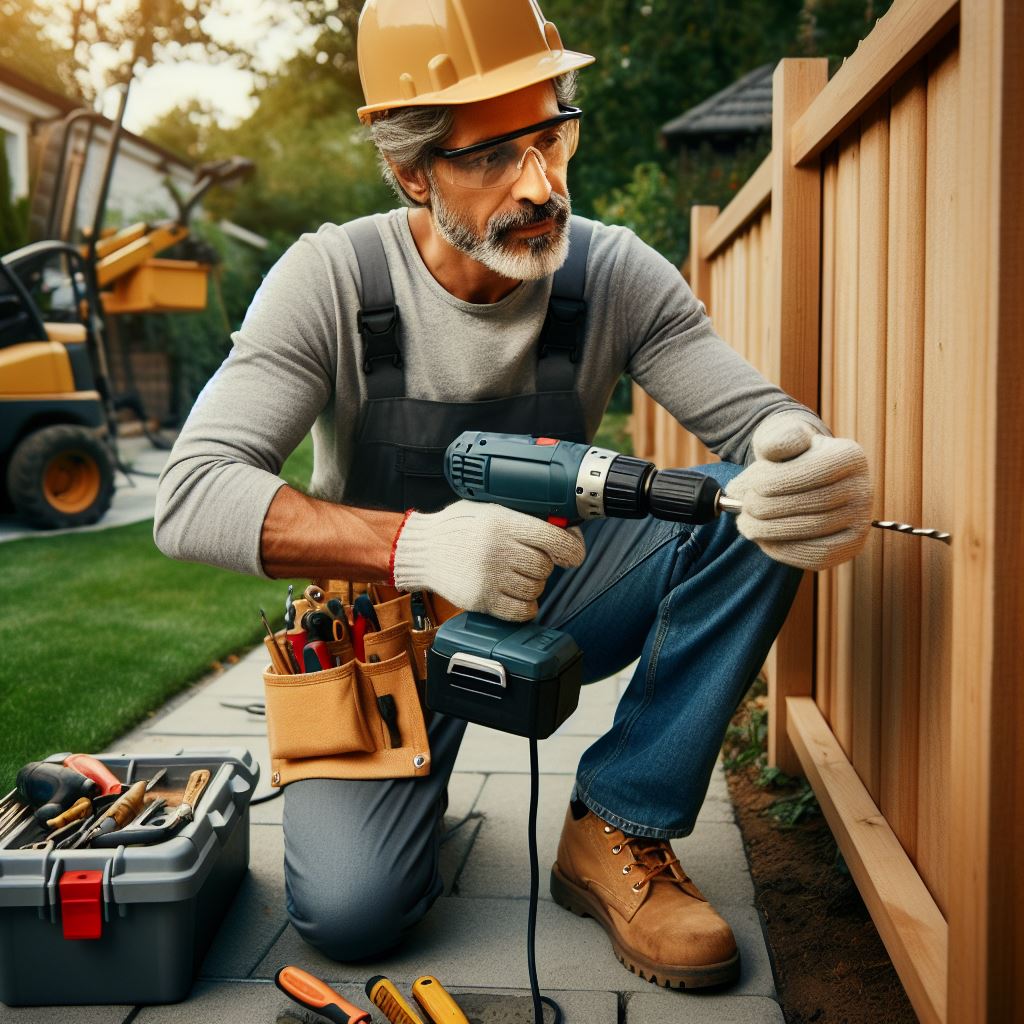Introduction
Being prepared for emergency repairs is crucial for homeowners as unexpected issues can cause significant damage and inconvenience.
This blog post aims to address common emergency repair issues faced by homeowners and provide quick, easy fixes for these problems.
Homeowners often encounter various emergency repair issues, such as plumbing leaks, electrical problems, malfunctioning appliances, and structural damage.
These issues can occur at any time, so it’s important to have the necessary knowledge and tools to handle them swiftly.
The purpose of this blog post is to equip homeowners with the information they need to address emergency repairs promptly and effectively.
By providing quick fixes for common issues, we aim to help homeowners minimize damage, reduce costs, and restore the functionality of their homes as quickly as possible.
Water leaks
Water leaks pose a significant threat to the integrity of your home’s structure and can lead to costly repairs if not addressed promptly.
Learning how to effectively manage and temporarily fix water leaks is essential for every homeowner.
Locating the source of the leak
Check faucets and supply lines
Begin by inspecting all faucets in your home for any signs of dripping or leaking. Even a small drip can indicate a larger issue with the faucet or its supply line.
Turn on each faucet one by one and carefully observe for any water escaping from the fixture or the connection points.
Inspect plumbing fixtures and pipes
Move on to examine all plumbing fixtures and pipes throughout your home.
Look under sinks, behind toilets, and around appliances such as dishwashers and washing machines.
Pay close attention to joints and connections where pipes meet fixtures, as these are common areas for leaks to occur.
Use a flashlight to thoroughly inspect hard-to-reach areas and check for any signs of moisture or water stains.
Temporary solutions
Use plumbing tape or sealant for minor leaks
If you identify a minor leak, such as a small crack or a loose joint, you can temporarily stop the flow of water by using plumbing tape or sealant.
Wrap the tape tightly around the affected area or apply sealant to seal any gaps or cracks.
This will help prevent further water damage until a permanent repair can be made.
Place buckets or towels to collect water
In cases where you are unable to immediately repair the leak, it’s important to minimize water damage by collecting any dripping water.
Position buckets strategically beneath the leak to catch the water and prevent it from spreading.
Additionally, place towels or rags around the affected area to absorb any excess moisture and protect nearby surfaces from water damage.
Taking swift action to locate and temporarily address water leaks can help mitigate the potential damage to your home and belongings.
While these temporary solutions provide a quick fix, it’s essential to follow up with permanent repairs to ensure the long-term integrity of your plumbing system.
Read: Energy Efficiency Laws and Your Rental Property
Electrical issues
Identifying power outages
Dealing with electrical issues can be daunting for homeowners. Power outages are one of the common problems that need quick solutions.
It is essential to identify the cause of the outage and determine whether it is a localized or widespread issue.
To identify power outages, start by checking the main circuit breaker. Sometimes, a tripped breaker can cause a complete loss of power.
If the breaker has tripped, reset it and check if the power is restored. If not, move on to the next step.
Determining if the issue is localized or widespread is crucial. If only your home is experiencing the power outage, then the problem is likely internal.
However, if other houses in your neighborhood are affected as well, it may be a widespread outage caused by external factors.
In this case, it is best to contact your local utility company to report the issue.
Temporary solutions
Once you have identified the cause of the power outage, it is time to find temporary solutions until a professional can fix the problem.
There are a few techniques that homeowners can use to regain temporary power.
Firstly, if the main circuit breaker has tripped, resetting it might restore power to your home.
Locate the breaker box and find the tripped breaker, which will be in the opposite position from the others.
Flip it back to the “on” position. If the breaker immediately trips again, there may be an electrical fault, and it is advisable to call an electrician.
If resetting the breaker does not work, the issue might be a blown fuse.
Locate the fuse box, which is typically separate from the breaker box, and check for any blown fuses. Replace them with new ones of the same amperage.
In some cases, power outages may only affect specific areas or outlets in your home.
To temporarily power essential appliances, use extension cords from other rooms or neighboring outlets that still have electricity.
However, ensure that the extension cord’s capacity matches the power requirements of the appliances you intend to use.
Remember that these temporary solutions are just quick fixes.
It is essential to contact a licensed electrician to identify and fix the root cause of the electrical issue.
Electrical problems can be dangerous and should not be taken lightly.
In essence, when facing electrical issues, homeowners should start by identifying power outages and determining if they are localized or widespread.
Temporary solutions such as resetting tripped breakers, replacing blown fuses, or using extension cords can provide temporary power.
However, it is crucial to seek professional assistance to address the underlying electrical problems for a long-term solution.
Read: Landlord-Tenant Law: Key Changes in US States
Broken windows or doors
Assessing the damage
When faced with broken windows or doors in your home, it is essential to assess the damage before attempting any repairs.
By understanding the extent of the cracks or shattered glass, you can determine the best course of action.
Inspecting the extent of the cracks or shattered glass
Start by carefully examining the broken window or door. Look for cracks in the glass and determine if it is still intact or completely shattered.
This initial assessment will help you decide if a temporary repair can suffice or if professional assistance is necessary.
Evaluating any frame or weatherstripping damage
In addition to the glass, it’s crucial to inspect the surrounding frame or weatherstripping for any signs of damage.
Check if there are any broken or loose parts that may compromise the overall integrity of the window or door.
Addressing these issues alongside fixing the glass will ensure a comprehensive repair.
Temporary solutions
Once you have assessed the damage, you can proceed with temporary solutions to secure your home until a permanent fix is obtained.
Applying clear tape to hold glass pieces together
If the cracks or shattered glass are minimal, you can apply clear tape to hold the broken pieces together.
Start by cleaning the glass surface and carefully aligning the fragments.
Then, apply the tape firmly along the cracks, both on the inside and outside of the window or door.
This will prevent further damage and stabilize the glass temporarily.
Using plywood or cardboard as a makeshift window or door replacement
In cases where the damage is more severe, utilizing plywood or cardboard becomes an effective solution.
Measure the dimensions of the broken area and cut the plywood or cardboard accordingly.
Gently fit the makeshift replacement, ensuring it covers the damaged section entirely.
Secure it in place using nails or screws, making sure it fits snugly and provides sufficient protection.
Remember, these temporary fixes are only meant to serve as a temporary solution until professional repairs or replacements can be made.
It is crucial to prioritize your safety and the security of your home by seeking the necessary assistance as soon as possible.
Broken windows or doors can pose a risk to both your property and the well-being of your household, so swift action is vital.
By assessing the damage and employing temporary solutions, you can ensure the immediate security of your home while you arrange for professional repairs or replacements.
Stay proactive and address these emergency repairs promptly to avoid further complications and maintain a safe living environment.
Read: New Safety Regulations for Rental Properties in 2024

Roof leaks
Dealing with a leaky roof can be a stressful situation for homeowners. When left unattended, roof leaks can cause extensive damage to your property.
However, there are steps you can take to quickly address the issue and prevent further harm.
In this section, we will explore how to locate the source of the leak and provide temporary solutions until professional help arrives.
Locating the leak
The first step in addressing a roof leak is to determine the exact location of the problem.
Water stains or drips in your attic or ceiling are often clear indicators of a leak. Inspect these areas carefully, looking for any signs of moisture.
Additionally, examine the roof from the outside. Look for visible damage, such as missing or damaged shingles.
Any loose or displaced shingles could potentially be the cause of the leak.
Temporary solutions
While waiting for professional repairs, it is essential to take action to minimize the damage caused by the leak. Here are some temporary fixes you can implement:
- Place buckets or tarps strategically to collect water and protect your belongings from further water damage. Make sure they are positioned to catch the water as it drips.
- Apply roofing sealant or caulk to patch minor leaks and temporarily stop water from entering your home. This can buy you some time until a professional roofer arrives.
It’s important to note that these temporary solutions are not a permanent fix.
They are meant to provide immediate relief and prevent further damage while you wait for a professional to assess and repair your roof.
It’s crucial to schedule a professional inspection as soon as possible to address the underlying issue.
In fact, finding a leak in your roof can be daunting, but by taking the necessary steps to locate the source and implement temporary fixes, you can minimize the damage and protect your home.
Remember to contact a professional roofer for a thorough assessment and permanent repair to ensure the long-term integrity of your roof.
Read: Eviction Process Changes: State Laws in 2024
HVAC system failures
The HVAC system is a crucial part of every home, responsible for keeping us comfortable by regulating temperature and air quality.
However, like any other system, it can sometimes fail, leaving homeowners in a state of discomfort.
When confronted with HVAC system failures, it’s important to diagnose the issue properly and implement temporary solutions to minimize any inconveniences until professional help arrives.
Diagnosing the issue
Checking the thermostat settings and power source
The first step in diagnosing HVAC system failures is to ensure that the thermostat settings are appropriate and that the power source is functioning correctly.
Make sure the thermostat is set to the desired temperature and is not in a programming mode.
Also, check if there is power supply to the system by verifying the circuit breaker and ensuring it is not tripped.
Inspecting filters and vents for blockages or damage
Blocked or damaged filters and vents can restrict airflow, causing inefficiency and potentially leading to system failures.
Inspect the filters for dirt, dust, or any other material that might obstruct proper airflow.
Also, check the vents to ensure they are open and free from any obstructions.
Temporary solutions
Using portable heaters or fans for temperature control
If the HVAC system is not functioning, using portable heaters or fans can provide temporary relief by regulating the temperature in specific areas of the house.
It is a quick fix until the system is repaired, allowing homeowners to stay comfortable in the meantime.
Cleaning or replacing filters to improve airflow
If the filters are dirty or clogged, it can significantly reduce the efficiency of the HVAC system and even cause malfunctions.
Cleaning or replacing the filters regularly can improve overall airflow, enhancing the performance of the system and preventing potential failures.
While these temporary solutions can help alleviate discomfort and maintain a livable environment, it’s crucial to remember that they are not permanent fixes.
Seeking professional assistance is essential to diagnose and address the root cause of the HVAC system failure.
In short, HVAC system failures can disrupt the comfort of our homes, but by following a few simple steps, we can diagnose the issues and implement temporary solutions.
Checking thermostat settings, power sources, filters, and vents can help pinpoint common problems.
Utilizing portable heaters or fans and cleaning or replacing filters can provide temporary relief until the system is repaired.
Remember to consult professionals to fix the underlying causes and ensure a long-term solution for your HVAC system.
Conclusion
Knowing how to handle emergency repairs is essential for homeowners as it can save time, money, and prevent further damage to the property.
We strongly encourage practicing these quick fixes and having necessary tools and materials readily available in case of emergencies.
However, it is important to note that certain repairs may require professional expertise, especially for major repairs or ongoing issues.
If you are unsure or uncomfortable with performing a repair, it is advisable to contact a professional to ensure safety and proper resolution.
By being prepared, proactive, and having a basic understanding of emergency repairs, homeowners can effectively handle unexpected situations and maintain their homes.




